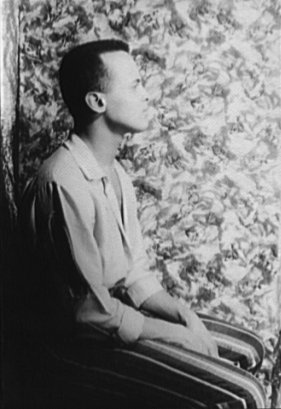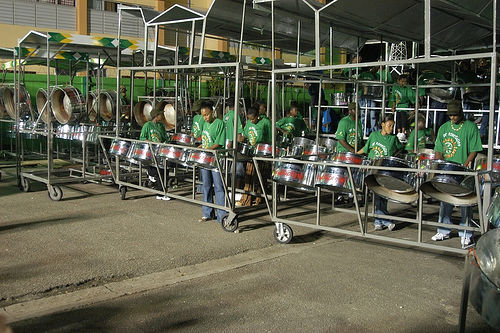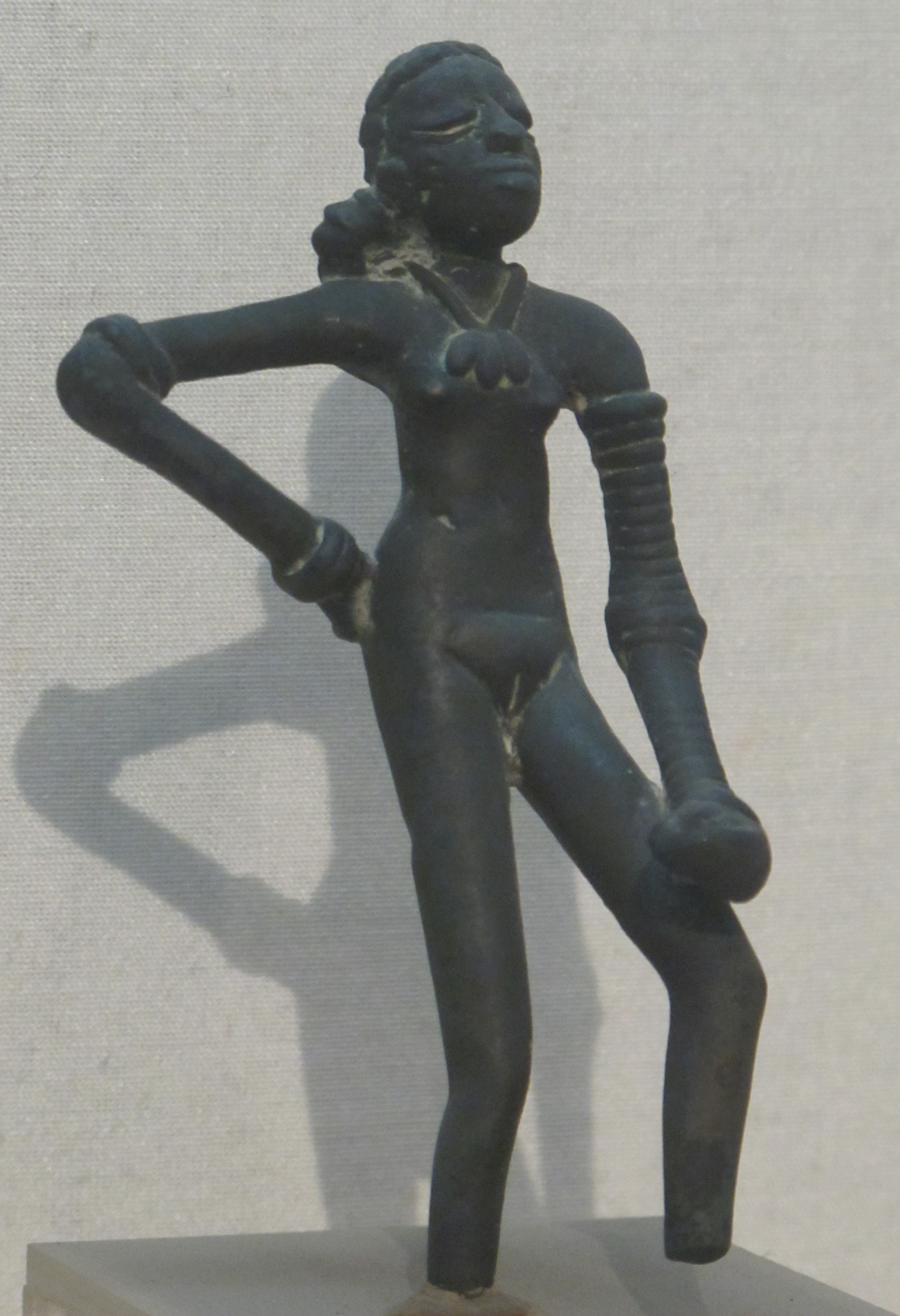|
Indo-Caribbean Music
Indo-Caribbean music is the musical traditions of the Indo-Caribbean people of the Caribbean music area. Indo-Caribbean music is most common in Trinidad and Tobago, Guyana, Jamaica, and Suriname. Indo-Caribbean traditional music often reflects the Bhojpuri heritage of many Indo-Caribbeans; women's folk songs are especially reflective of the music of Bhojpur. These include folk songs for childbirth (''sohar''), humorous and light-hearted songs for a bride's family to insult the groom's (''gali''), funereal songs (''nirgun'') and ''matkor''. Other women's folk songs are seasonal and are performed at festivals like the '' phagwah'' and ''holi''. Instrumentation consists mostly of the '' dhantal'', a metal rod and claper, and the ''dholak'', a two-headed barrel drum. Traditional Hindu bhajans are also common. Modern Indo-Caribbean traditions include the seasonal, responsorial men's form, the '' chowtal'', and a vocal song form called '' taan-singing'', performed by a single male ... [...More Info...] [...Related Items...] OR: [Wikipedia] [Google] [Baidu] |
Indo-Caribbean
Indo-Caribbeans or Indian-Caribbeans are Non-resident Indian and person of Indian origin, Indian people in the Caribbean who are descendants of the Girmityas, Jahaji Indian indenture system, Indian indentured laborers brought by the United Kingdom, British, Netherlands, Dutch, and France, French during the colonial era from the mid-19th century to the early 20th century. A minority are descendants of Indians or other South Asians who immigrated as entrepreneurs, businesspeople, merchants, engineers, doctors, and other professional occupations beginning in the mid-20th century. Most Indo-Caribbean people live in the English language, English-speaking Caribbean nations, the Dutch-speaking Suriname and the French overseas departments of Guadeloupe, Martinique and French Guiana, with smaller numbers in other Caribbean countries and, following further migration, in North America and Europe. Indo-Caribbeans may also be referred to as Caribbean Indians, East Indian West Indians, or Carib ... [...More Info...] [...Related Items...] OR: [Wikipedia] [Google] [Baidu] |
Taan (music)
''Taan'' (Hindi: , ur, ) is a technique used in the vocal performance of a raga in Hindustani classical music. It involves the improvisation of very rapid melodic passages using vowels, often the long "a" as in the word "far", and it targets at improvising and to expand weaving together the notes in a fast tempo. It is similar to the technique '' ahaat'', used in Arabic music. The ''murki'', a type of ornamentation, is a swift, short and taan-like movement that is heavily used in thumri Thumri () is a vocal genre or style of Indian music. The term "thumri" is derived from the Hindi verb ''thumuknaa'', which means "to walk with a dancing gait in such a way that the ankle-bells tinkle." The form is, thus, connected with dance, dr .... Types Taans are clustered in different types: ''Bol Taan'' : Taan can ...[...More Info...] [...Related Items...] OR: [Wikipedia] [Google] [Baidu] |
Culture Of Indian Diaspora
Culture () is an umbrella term which encompasses the social behavior, institutions, and norms found in human societies, as well as the knowledge, beliefs, arts, laws, customs, capabilities, and habits of the individuals in these groups.Tylor, Edward. (1871). Primitive Culture. Vol 1. New York: J.P. Putnam's Son Culture is often originated from or attributed to a specific region or location. Humans acquire culture through the learning processes of enculturation and socialization, which is shown by the diversity of cultures across societies. A cultural norm codifies acceptable conduct in society; it serves as a guideline for behavior, dress, language, and demeanor in a situation, which serves as a template for expectations in a social group. Accepting only a monoculture in a social group can bear risks, just as a single species can wither in the face of environmental change, for lack of functional responses to the change. Thus in military culture, valor is counted a typica ... [...More Info...] [...Related Items...] OR: [Wikipedia] [Google] [Baidu] |
Caribbean Music
Caribbean music genres are very diverse. They are each synthesis of African, European, Arab, Asian, and Indigenous influences, largely created by descendants of African slaves (see Afro-Caribbean music), along with contributions from other communities (such as Indo-Caribbean music). Some of the styles to gain wide popularity outside the Caribbean include, bachata, merengue, palo, mambo, denbo, baithak gana, bouyon, cadence-lypso, calypso, soca, chutney, chutney-soca, compas, dancehall, jing ping, parang, pichakaree, punta, ragga, reggae, dembow, reggaeton, salsa, soca, and zouk. Caribbean music is also related to Central American and South American music. The history of Caribbean music originates from the history of the Caribbean itself. That history is one of the native land invaded by outsiders; violence, slavery, and even genocide factor in. Following Christopher Columbus' 1492 landing, Spain claimed the entire region as its own. That didn't sit well with eith ... [...More Info...] [...Related Items...] OR: [Wikipedia] [Google] [Baidu] |
Music Of Guyana
The music of Guyana encompasses a range of musical styles and genres that draw from various influences including: Indian, Latino-Hispanic, European, African, Chinese, and Amerindian music. Popular Guyanese performers include: Terry Gajraj, Eddy Grant, Dave Martins & the Tradewinds (Johnny Braff, Ivor Lynch & Sammy Baksh), Aubrey Cummings, and Nicky Porter. The Guyana Music Festival has proven to be influential on the Guyana music scene. History Earliest recorded musical interactions were mainly related to the missionary-driven spread of Christianity in the New World. Moravian missionaries used music used hymns to reach the Kalina people in the area of Berbice. Slaves brought to the region via the Atlantic slave trade contributed African influences from a wide array of different cultures, although music and dance was also utilized to promote fitness in slaves by their sellers. After emancipation, the period in which the British sought to bring indentured labor into the colonies in ... [...More Info...] [...Related Items...] OR: [Wikipedia] [Google] [Baidu] |
Music Of Suriname
The music of Suriname is known for kaseko music, and for having an Indo-Caribbean tradition. Kawina Kawina originated around the 1860s, after the abolition of slavery. The vocals are typically call-and-response, and it is accompanied by all kinds of typical Surinamese percussion, such as the skratji. Like many South American music genres, the rhythm of the ''kawina'' originates in Africa. African slaves took their religions, such as Winti, and music with them to Suriname. To dissipate the time, the slaves sung during the work on the plantations, often in a typical pattern of one voice that asks for, and is answered in unison ("call-and-response"). The music was performed so rhythmically that it became a dance. In the beginning, the lyrics were religious. After abolition of slavery, it became entertainment music, with lyrics that are more socially critical in tone. From then on, ''kawina'' is performed by orchestras containing about ten band members, on various Surinamese percus ... [...More Info...] [...Related Items...] OR: [Wikipedia] [Google] [Baidu] |
Music Of Trinidad And Tobago
The music of Trinidad and Tobago is best known for its calypso music, soca music, chutney music, and steelpan. Calypso's internationally noted performances in the 1950s from native artists such as Lord Melody, Lord Kitchener and Mighty Sparrow. The art form was most popularised at that time by Harry Belafonte. Along with folk songs and African- and Indian-based classical forms, cross-cultural interactions have produced other indigenous forms of music including soca, rapso, parang, chutney, and other derivative and fusion styles. There are also local communities which practice and experiment with international classical and pop music, often fusing them with local steelpan instruments. MusicTT was established in 2014 to facilitate the business development and export activity of the music industry in Trinidad and Tobago. History The Cedula of Population of 1783 laid the foundation and growth of the population of Trinidad. The island's Spanish possessors contributed little toward ... [...More Info...] [...Related Items...] OR: [Wikipedia] [Google] [Baidu] |
Culture Of India
Indian culture is the heritage of social norms, ethical values, traditional customs, belief systems, political systems, artifacts and technologies that originated in or are associated with the ethno-linguistically diverse India. The term also applies beyond India to countries and cultures whose histories are strongly connected to India by immigration, colonisation, or influence, particularly in South Asia and Southeast Asia. India's languages, religions, dance, music, architecture, food and customs differ from place to place within the country. Indian culture, often labelled as a combination of several cultures, has been influenced by a history that is several millennia old, beginning with the Indus Valley civilization and other early cultural areas.John Keay (2012), ''India: A History'', 2nd Ed – Revised and Updated, Grove Press / Harper Collins, , see Introduction and Chapters 3 through 11Mohammada, Malika (2007), ''The foundations of the composite culture in India'', Aa ... [...More Info...] [...Related Items...] OR: [Wikipedia] [Google] [Baidu] |
Music Of India
Owing to India's vastness and diversity, Indian music encompasses numerous genres in multiple varieties and forms which include classical music, folk (Bollywood), rock, and pop. It has a history spanning several millennia and developed over several geo-locations spanning the sub-continent. Music in India began as an integral part of socio-religious life. History Pre-history Paleolithic The 30,000-year-old paleolithic and neolithic cave paintings at the UNESCO world heritage site at Bhimbetka rock shelters in Madhya Pradesh show a type of dance. Mesolithic and chalcolithic cave art of Bhimbetka illustrates musical instruments such as Gongs, Bowed Lyre, daf etc. Neolithic Chalcolithic era (4000 BCE onward) narrow bar shaped polished stone celts like music instruments, one of the earlier musical instrument in India, were excavated at Sankarjang in the Angul district of Odisha. There is historical evidence in the form of sculptural evidence, i.e. musical instruments, ... [...More Info...] [...Related Items...] OR: [Wikipedia] [Google] [Baidu] |
Filmi
Filmi ("of films") music soundtracks are music produced for India's mainstream motion picture industry and written and performed for Indian cinema. In cinema, music directors make up the main body of composers; the songs are performed by playback singers and the genre represents 72% of the music sales market in India. Filmi music tends to have appeal across India, Nepal, Pakistan and overseas, especially among the Indian diaspora. Songs are often in different languages depending on the target audience, for example in Hindi or Tamil. Playback singers are usually more noted for their ability to sing rather than their charisma as performers. Filmi playback singers' level of success and appeal is tied to their involvement with film soundtracks of cinema releases with the highest box office ratings. At the "Filmi Melody: Song and Dance in Indian Cinema" archive presentation at UCLA, filmi was praised as a generally more fitting term for the tradition than "Bombay melody", "suggestin ... [...More Info...] [...Related Items...] OR: [Wikipedia] [Google] [Baidu] |
Baithak Gana
{{unreferenced, date=June 2014 Baithak Gana is a form of music originating in Suriname by the Indian community. Baithak is a social gathering. It is a mix of Bhojpuri folk songs with other Caribbean influences. It is similar to Chutney music that originated in Trinidad and Tobago. The most popular exponent in Surinam of the genre were Ramdew Chaitoe and Dropati. Instruments In basic Baithak Gana there are three instruments (though there are other instruments that could be added to the ensemble), harmonium, dholak and the dhantal. The harmonium is a free-standing keyboard instrument similar to a reed organ. The dholak is a double headed drum that originated in Northern India, however, it is still used in the folk songs from Pakistan or Nepal. The last instrument that is used in this style of music is the dhantal which serves as the rhythmic piece of the ensemble, it consists of a long steel rod which is then "struck" by a U-formed piece, the origin of this device is unclea ... [...More Info...] [...Related Items...] OR: [Wikipedia] [Google] [Baidu] |
Chutney Music
Chutney music is a fusion genre of Indian folk music, specifically Bhojpuri folk music, with local Caribbean calypso and soca music, and later on Bollywood music. This genre of music that developed in Trinidad and Tobago is popular in Trinidad and Tobago, Guyana, Suriname, Jamaica, other parts of the Caribbean, Fiji, Mauritius, and South Africa. Chutney music emerged mid-20th century and reached a peak of popularity during the 1980s. Several sub-genres have developed. History This contemporary fusion of genres was created by Indo-Caribbean people whose ancestors were from the Hindi Belt. They were taken as indentured laborers by the British to replace slave laborers on sugar plantations after emancipation. Chutney music was established in the 1940s within temples, wedding houses, and cane fields of the Indo-Caribbean. There were no recordings until 1968, when Ramdew Chaitoe of Suriname, a small country in South America, recorded an early rendition of chutney music. The album ... [...More Info...] [...Related Items...] OR: [Wikipedia] [Google] [Baidu] |





